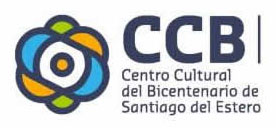ABOUT THE INDIGENOUS PEOPLE WHO INHABITED THE CURRENT TERRITORY OF THE PROVINCE OF SANTIAGO DEL ESTERO.
There are many references in numerous sources of Colonial History about the inhabitants of this territory, with respect to their customs, their appearance and even what they were called. But it is precisely in this respect that the various names given to the human groups that inhabited the field of Santiago del Estero did not coincide. That is to say, that the kind of ethnography that the chroniclers, priests of different orders, colonisers, etc. collected from the observations made in the field, may have lacked veracity. This led Argentine researchers to review all this documentary material and to try to interpret it correctly. They even distinguished the archaeological from the ethnographic.
Regarding the name given to the indigenous groups of this territory, it can be said that there is no total or general agreement among ethnographers and archaeologists, since there are different criteria; some take purely physical aspects, others purely cultural aspects.
The fact is that in order to talk about the indigenous people of this plain of Santiago del Estero and the names they received, we must first clarify that those who lived some time before the conquest, archaeological science, in an analytical study of their development and material manifestations, differentiate them into CULTURAL STAGES, which are: Mercedes, Sunchituyoj and Averías, being their protagonists, the TONOCOTÉS.
The TONOCOTÉS are the sedentary indigenous people who inhabited the region where the city of Santiago del Estero was founded.
First Location: their habitat was mainly located in the plains that bathed the Dulce and Salado Rivers, between approximately 26º and 29º south latitude parallels.
To the north of these territories lived the Lules, and to the south the Sanavirones. To the west, from the Aconquija mountain and the land of Ancasti, were the Cacanos, and as for the eastern limit, it is assumed that it would not stray far from the left bank of the Salado river.
The Tonocotés belonged to the brasilid type and were dedicated to agriculture. Although influenced by the Andean cultures, they used to settle only where the natural conditions of the territory allowed them to develop their particular way of life. Their houses were located in the form of villages on the banks of the rivers, on small, largely artificial elevations of land, which the Wagner brothers called “tumuli”. The hut itself was made of a thin material, had a round thatched roof. The huts were circular or rectangular with gabled roofs. The settlement was surrounded by poles to defend against attacks by invading peoples.
Physical appearance:
Little is known about the physical characteristics of the Tonocotés, but according to studies in the Saldo River area, it is inferred that they were of regular stature, brachycephalic, broad-faced and medium-nosed.
Clothing:
The Tonocotés men wore a kind of short apron made of ostrich feathers and the women made them out of chaguar fibre or guanaco or llama cloth with a chiripá underneath and a cloth knotted to one shoulder with which they covered their torso.
From the men’s necks hung a necklace of ostrich feathers.
In winter, both men and women, covered their torso with blankets for warmth, adorned with chaquiras (beads of varied material used to make necklaces, bracelets or various female ornaments) made of vulture bones.
Weapons:
Their weapons were bow and arrow, boleadoras, slingshots, axes, macanas (thick club made of hard, heavy wood) The bow, apparently of Amazonian type, i.e. large in size and the arrows were in proportion. The tips of the arrows were poisoned, it is not known with what kind of poison.
Beliefs: They believed only in live or die. They worshipped their dead and therefore took care of their burial. They held meetings and ceremonies to worship their gods: the snake and the owl.
Customs and habits: these Indians were dedicated to hunting, fishing and gathering. Little is known about hunting. They fished using various techniques, but mainly in corrals where they caught fish in nets or arrowed them with a bow.
As for gathering, the aim was to find the fruit of the carob tree, the chañar and the prickly pear, as well as some dried roots such as cassava, albeit wild.
Like most of the aborigines, the Tonocotés were fond of drunkenness. They prepared their intoxicating drinks from carob and corn, and their feasts were regular.
They were farmers, harvesting corn, beans, squash, etc.; they were also cattle breeders (they raised llamas and guanacos, tame ostriches and other domestic fowl).
Skilled spinners and weavers. They gathered wild fruits and honey. But above all these activities, the most outstanding was pottery, of which a large number of pieces were found with the most varied designs, mostly represented by the Anthropo-Ornitho-Ophidic divinity.
In the same region of Santiago, home of the Tonocotés, an interesting collection of archaeological material was discovered, consisting mainly of polychrome pottery, to which the brothers Emilio and Duncan Wagner, its discoverers and disseminators, gave the name of “Chaco-Santiagueña Culture”, a culture that survived in the region until the beginning of the Hispanic period. Given that the indigenous population living there at that time were the Tonocotés, it follows that these aborigines were its bearers.


